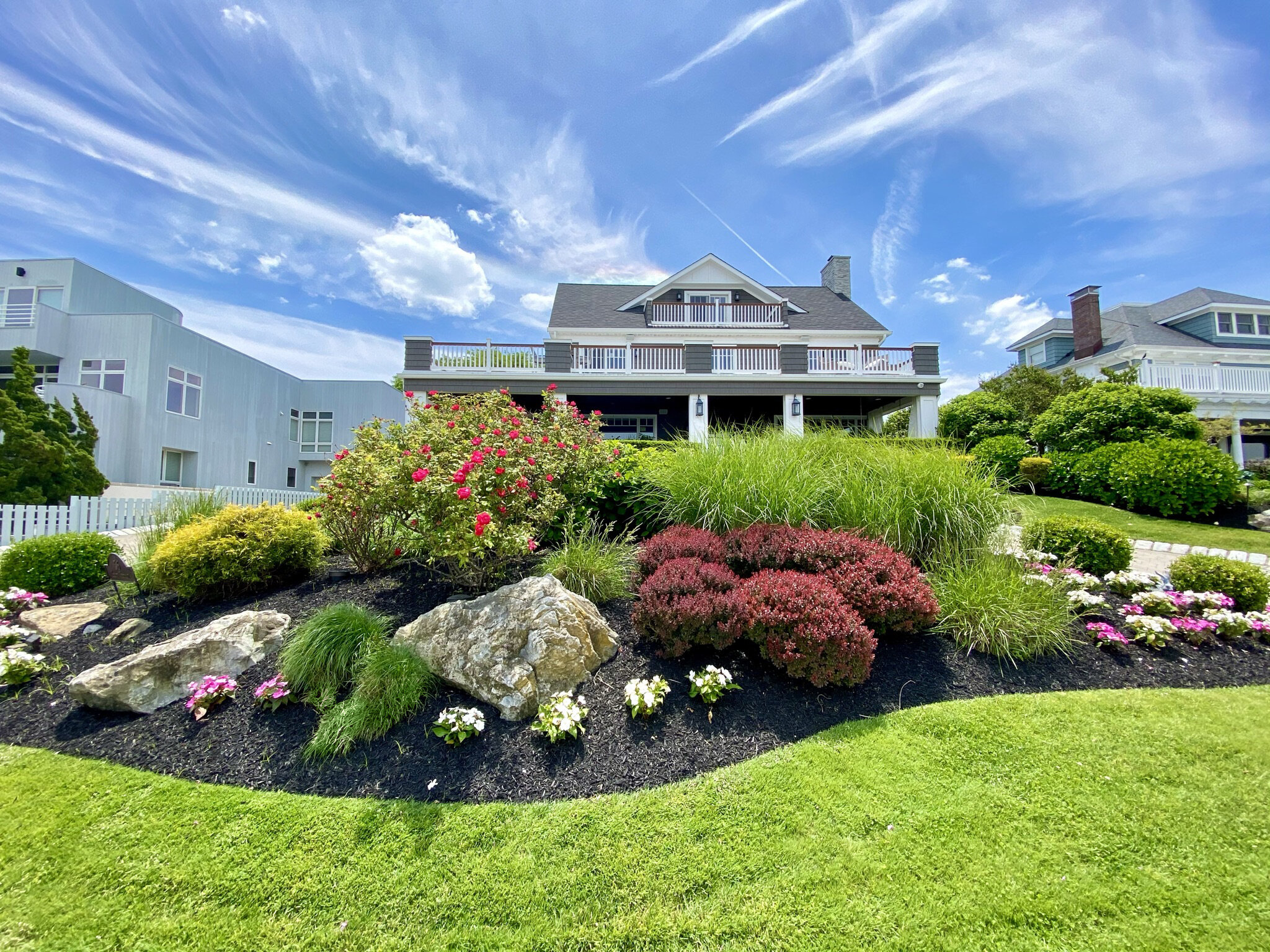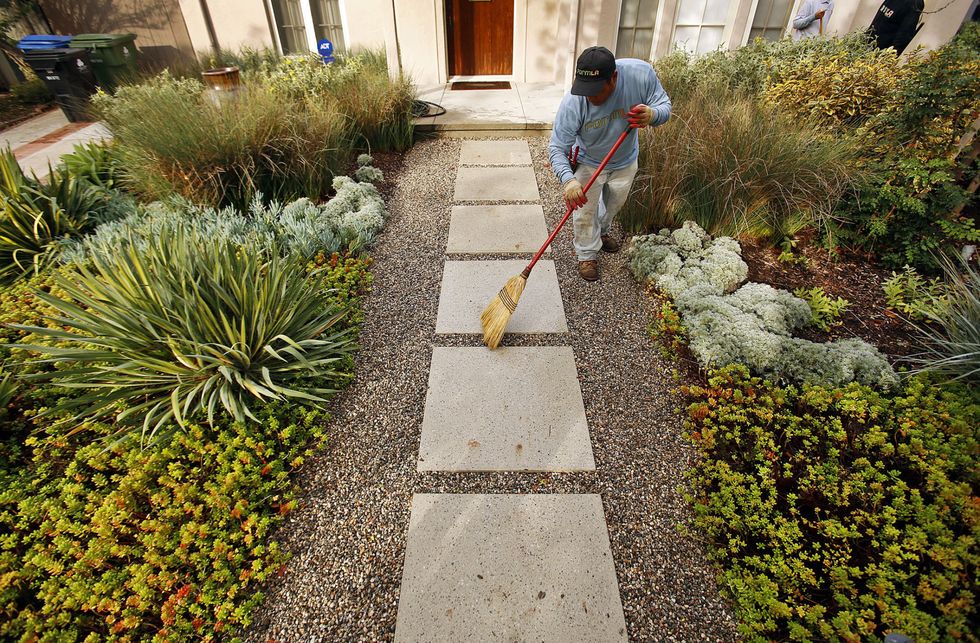A Comprehensive Overview to Designing and Implementing Effective Landscape Design Solutions
The art and scientific research of landscape design expand past simple aesthetic appeals; they entail a thoughtful combination of layout principles, ecological stewardship, and functional execution. A detailed overview to reliable landscaping options begins with a thorough understanding of your outdoor room, emphasizing the relevance of unity, equilibrium, and proportion. As we discover sustainable techniques and the option of ideal plants, the effects for biodiversity and neighborhood well-being end up being increasingly evident. What approaches can one utilize to guarantee these landscapes not only prosper however additionally prosper in harmony with their environments?

Comprehending Landscape Layout Principles
One may question what fundamental aspects contribute to effective landscape style. At its core, successful landscape layout depends upon a number of key concepts that assist the setup and option of components within a space. These concepts consist of unity, rhythm, proportion, and equilibrium, each serving to develop a harmonious exterior setting.
Unity refers to the cohesive partnership among numerous components, making certain that they function together aesthetically and functionally. Balance can be achieved through in proportion or unbalanced plans, allowing the landscape to really feel secure and welcoming. Proportion includes understanding the range of elements in connection with each other and the surrounding environment, promoting visual consistency and comfort.

Analyzing Your Outdoor Area
Before applying the concepts of landscape layout, a complete assessment of your exterior space is crucial. This preliminary analysis helps define the extent of your landscape design job and makes certain that your design straightens with the distinct attributes of your home. Begin by assessing the measurements of your space, taking accurate dimensions to understand the offered location for different elements such as pathways, patio areas, and gardens.
Following, observe the existing features of your landscape, consisting of topography, dirt quality, and water drainage patterns. These factors considerably affect plant option and positioning. Additionally, examine the sunshine exposure across various locations throughout the day, as this will impact the kinds of plants that grow in your yard.
Take into consideration the microclimates produced by structures, trees, and other challenges, as they can impact temperature and wetness levels. Take note of any kind of existing plants or hardscape components that you wish to eliminate or preserve. This thorough examination prepares for a effective and well-informed landscaping solution, making sure that your layout is not only visually pleasing yet sustainable and also functional for several years to come.
Sustainable Landscape Design Strategies
These practices not only advertise environmental equilibrium however additionally improve the functional and aesthetic worth of a landscape. Applying reliable watering systems, such as drip irrigation, lessens water my link waste and guarantees that plants receive appropriate dampness (Palm Desert Landscaping).

One more effective technique is the critical positioning of hedges and trees to provide natural windbreaks and shade, therefore decreasing energy prices (Palm Desert Landscaping). Rain yards can be incorporated into the landscape style to handle stormwater overflow successfully, filtering system toxins before they get in rivers
Selecting the Right Plants
Picking the right plants for your landscape is critical to attaining both aesthetic allure and eco-friendly consistency. The process begins with an understanding of your local climate, soil problems, and the particular microenvironments within your landscape. Assessing factors such as sunshine direct exposure, dampness degrees, and existing plants will certainly help you choose plants that grow in your special setting.
Think about integrating indigenous plants, as they are well-adapted to regional problems, require much less maintenance, and assistance local wildlife. Furthermore, picking a varied range of varieties can enhance biodiversity while lowering the risk of condition and pest outbreaks. It is vital to review the development practices, flowering periods, and link seasonal colors of prospective plants to produce a natural and vibrant landscape.
In addition, consider the planned use of the space; for circumstances, if the area will certainly experience high foot web traffic, choose resistant ground covers. By attentively picking plants that line up with both your environmental requirements and visual goals, you can produce a lasting landscape that not only enhances your building however additionally contributes favorably to the bordering ecological community.

Execution and Maintenance Techniques
As soon as the best plants have actually been picked for your landscape, the focus shifts to effective execution and ongoing maintenance techniques. Successful setup begins with proper website preparation, that includes dirt testing to determine nutrient levels and pH, complied with by changing the dirt as needed. Carefully organize plants according to their development practices and light requirements, guaranteeing adequate spacing to promote healthy and balanced growth.
Watering is an essential element of application. Establish a watering timetable that considers the specific demands of each plant species, changing for seasonal adjustments. Utilizing drip watering systems can improve water effectiveness and minimize overflow.
Upkeep methods need to be applied to guarantee the long life and vigor of your landscape. Normal tasks consist of weeding, mulching, and pruning to control development and protect against illness. Fertilizing should be carried out based on dirt examinations, providing the essential nutrients without over-fertilizing.
Keeping an eye on for conditions and pests is click for more necessary; early detection can prevent considerable damage. Seasonal adjustments to maintenance regimens, such as winterizing perennials and preparing for springtime development, will certainly make certain that your landscape remains healthy and aesthetically appealing year-round.
Final Thought
To conclude, efficient landscaping remedies call for a complete understanding of layout principles, careful analysis of outside areas, and the application of lasting strategies. The option of suitable plant varieties plays an important duty in improving visual charm and ecological strength - Palm Desert Landscaping. Successful application and ongoing upkeep additionally make certain the durability and vitality of landscapes. By integrating these aspects, landscapes can be changed into beautiful, functional environments that promote biodiversity and add positively to area well-being.
One could question what fundamental aspects add to reliable landscape layout. At its core, effective landscape design hinges on numerous crucial concepts that direct the plan and choice of aspects within a space.Selecting the right plants for your landscape is crucial to achieving both aesthetic charm and ecological consistency. It is essential to review the growth routines, blooming periods, and seasonal colors of prospective plants to produce a natural and vibrant landscape.
As soon as the appropriate plants have actually been selected for your landscape, the focus moves to efficient execution and continuous upkeep techniques.